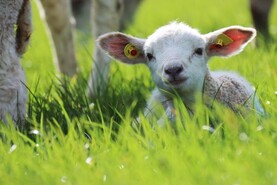The Tullamore Farm commercial ewe flock has commenced lambing, with the first ewe lambed on Thursday 7 March.
This ewe is one of the Easycares that were purchased last autumn and will now be run alongside the mule and mule-cross flock to compare the breed to the seven years of data already collected.
The Easycare mature ewes and hoggets that were purchased were crossed with Suffolk, Texel and Charolais rams, the same ones used on the current flock, with this ewe lambing down with two Suffolk lambs.
"Ewes are in good order overall and are springing up nicely. It will be an interesting lambing on the farm with the introduction of the Easycare ewes," stated Tullamore Farm manager Shaun Diver.
Earlier lambing
Lambing was pulled back a week this year, a decision made by Shaun.
Lambing typically commenced from St Patrick’s Day onwards, but with the breeding season for the suckler herd beginning at the end of April, there was little of a break in between the lambing and breeding, leading to a long busy period from February (when the suckler herd calves) right up into May when the first round of breeding happens.
The suckler herd is still calving at a steady rate. Quite a large amount of the maternal bulls used this year have produced bull calves, with talks of increased sexed semen use on the herd being discussed for 2024.
With first-calved heifers having the highest energy demand and ground conditions improved over the past few days, Shaun has turned out some of the first-calved heifers with their calves at foot on Friday 8 March.
Some slurry was also spread on some paddocks grazed by single-bearing ewes over the winter and spring period.






 This is a subscriber-only article
This is a subscriber-only article










SHARING OPTIONS: